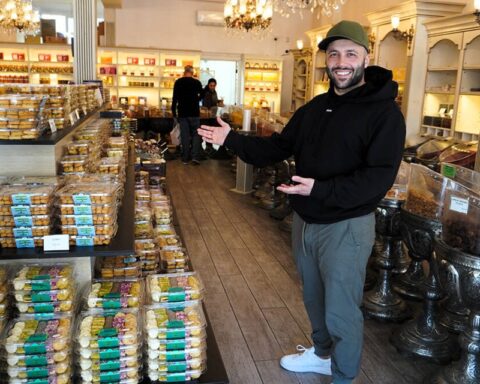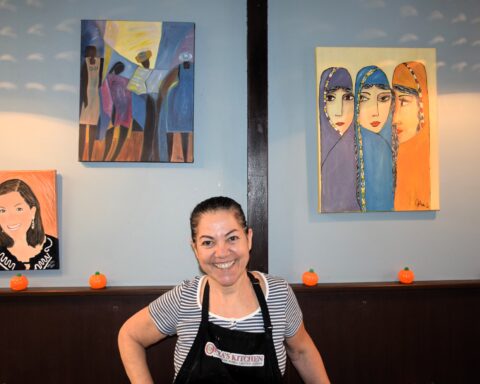It’s likely Prime Minister Justin Trudeau saw events playing out differently than how they actually turned out for his recent state visit to India.
Like most Canadians, he probably thought February an ideal time to fly someplace warm. He would take the family to India, enjoy a weeklong vacation, get some great photo ops at sites like the Taj Mahal and the Golden Temple, and then meet India’s Prime Minister Narendra Modi for a day of official state business to wrap up his trip.
Though he would never admit it, Trudeau probably also hoped to out-Instagram his new arch rival, NDP Leader Jagmeet Singh, who was getting married in Mexico this past weekend.
And, last but not least, by taking his four Sikh cabinet ministers along for the trip, Trudeau would score points with his Sikh electoral base back in Canada.
While Canada’s PM did get in his photo-ops, he and his team was put on the defensive throughout the visit by accusations of his government being in league with “Khalistanis”—shorthand for “Khalistani terrorists”. These charges came from multiple fronts.
Indian reporters dogged Trudeau with questions about harbouring “Sikh separatists”, another term for “Khalistanis”, at every opportunity, while leading media outlets like the Times of India, Hindustan Times, NDTV and others pushed the Khalistan narrative relentlessly.
Indian news magazines like Outlook published polemical essays about how “a new real threat of Khalistani terror” has emerged due to support from Sikh temples patronized by unwitting “liberal white politicians”, like Justin Trudeau.
Meanwhile, members of the Indian government provided a lesson in how to put the “host” into hostility by repeating the provocative allegations against their guests. Captain Amarinder Singh, the chief minister of Punjab, where most Sikhs hail from, did his central government’s bidding when he stated, “There seems to be evidence that there are Khalistani sympathizers in Trudeau’s cabinet,” alluding to Defence Minister Harjit Sajjan, whom Singh has called a Khalistani in the past.
Sajjan has never made a statement in support of a separate Sikh state. If anything, he has spoken against it.
And then, into this charged environment, enter ex-Khalistani terrorist Jaspal Atwal, who makes an appearance at an event with the Trudeaus in Mumbai. A Canadian security official, reported to be Daniel Jean, told Canadian media outlets that it is possible that the presence of Atwal at the function with the Trudeaus was not an accident and had been engineered by elements within the India’s intelligence services.
Even if this turns out not to be the case, the fact that Atwal, an actual ex-Khalistani who tried to kill an Indian government official in Canada in 1986, was granted a visa to enter India at the same time as the Trudeau visit arouses suspicion. Canadian security officials like Jean are in the right to consider all possibilities about Atwal’s incidental presence at an event hosted by the Canadian High Commission in Mumbai.
Meanwhile, back in Canada, mainstream outlets could have benefited from a dose of Jean’s skepticism. Instead Canadian reporters on the most parroted the opinions of Indian media through analysis pieces that stated there has been “a revival of Khalistani terror in recent years“. Despite the scraps of evidence the Indian government has presented to push this claim, it highly spurious at best.
A quick refresher here: Khalistan is the name of a currently nonexistent Sikh homeland. It is based on the state of Punjab, a territory slightly larger than Vancouver Island, separating from India. For sake of analogy think of the Basque region declaring independence from Spain, the Kurdish north opting out of Iraq, or Quebec leaving Canada.
Over 30 years ago in the early ’80s, this idea of a Sikh homeland erupted overnight out of dormancy into a full-blown political cause when the Indian government made the pivotal error of turning their tanks on the Golden Temple, or the Sikh Vatican. Thousands of people would die in the Punjab from the ensuing violence over the next decade, including over 15,000+ in the anti-Sikh riots in Delhi in 1984, murdered by mobs who were provided weapons and transport via Indian government officials. Nobody has even been charged for that mass killing.
And here—the most important wrinkle to this story—it has been over 20 years since a terror attack has been credibly linked to the Khalistan movement. In the late ’90s, at the same time the IRA signed its peace agreement in Northern Ireland, the Khalistan militancy faded away. Funds dried up, and the fighters who took up its cause retired back into normal lives.
Even the last of the hardcore holdouts like Lakhbir Singh Rode, the head of the International Sikh Youth Federation (ISYF), one of the two key groups at the centre of the Khalistan militancy, now keeps a day job running a meat business in Lahore, Pakistan.
Khalistan died. Khalistanis died. But the Khalistan narrative won’t die. And that is because it won’t be allowed to rest in peace because politicians in India, and ironically, even here in Canada, won’t let it.
The “threat” of Khalistan has more value alive than dead.
And so the storyline of Khalistan terror continues to develop, even if the movement is gone. The theatrics are necessary to showcase it as a viable threat.
Scottish national Jagtar Johal, 31, is one person who seems to be ensnared in this net. The Sikh activist who ran a website called NeverForget1984 was in India for his wedding last November when he was taken by Indian police. Johal is being detained, without charge, for allegedly having a role in a series of political assassinations in Punjab over the last two years.
Sikhs around the world have rallied around the #FreeJaggi hashtag to liberate Johal on what appear to be a politically motivated detention.
Over 100 Sikh temples around the world reacted to the #FreeJaggi controversy by recently barring Indian diplomats from their premises. The response from Indian politicians was predictable—the temple officials, from all 100+ organisations, are Khalistanis.
And now Justin Trudeau leaves India having been compelled into signing a Framework for Cooperation on Countering Terrorism and Violent Extremism between Canada and India. Canada and India had an intelligence-sharing arrangement before, during the height of the violence in Punjab in the ’80s and ’90s. That arrangement, however, was ended after the Khalistan movement died out. It is now on the path to coming back into place, renewing a fear that India’s corrupt police and paramilitary will be able to shake down the Indian relatives of Canadian Sikhs whose names appear in intelligence reports shared by Canada.
So what is driving this Russian-style disinformation campaign by India against its own former citizens and their descendants? It is not a terror attack the Indian government appears to be most fearful of. Rather, it is the disproportionate political influence of Canada’s Sikh community on Canada, a G7 country, that has New Delhi in fits.
As unified as India seems, it is an unwieldy coalition of 1.3-billion people with multiple ethnic groups, languages, and religions. The Indian government holds a reasonable fear that external influence could stir trouble again in the Punjab, especially in a country where the ruling BJP, a right-wing pro-Hindu party, itself governs through cold-blooded divide and rule machinations—the BJP frequently turns a blind eye to the violence of its own militant wing, the RSS, when it targets minority groups like Sikhs, Christians, and Muslims.
Currently, four of Trudeau’s cabinet ministers are Sikhs. There is also the possibility the next prime minister, or at least the next kingmaker, could be Jagmeet Singh, also a Sikh and someone with a social justice agenda. With an overall population of close to a million people in Canada, the Sikh community will only continue to grow in political influence for the years to come.
What the Indian government fails to recognize—or refuses to—is that politicians like Jagmeet Singh and others from a new generation of Sikhs are motivated not by separatism but by social justice causes. When they seek to redress past wrongs from incidents like anti-Sikh mass killings of Delhi in 1984, they are looking for reconciliation to heal past wounds, not for further division.
But this nuance is lost on the Indian government and so it indiscriminately responds to any criticism by undermining opponents with labels like “Khalistanis”. Or it resorts to an old tactic of withholding travel visas. While ex-terrorist Jaspal Atwal can obtain an Indian visa—on multiple occasions it should be noted—NDP leader Jagmeet Singh cannot.
Singh was denied a visa in 2013, as was Liberal MP Sukh Dhaliwal in 2011. Both men brought forward motions in the Ontario provincial legislature and in the House of Commons respectively to have the Delhi mass killings classified as a genocidal act.
The motion was eventually carried last year by the Ontario government. The Indian government responded by calling it “misguided”.
Ironically, however, hammering down on opponents with the Khalistani cudgel is not beneath the use of Canadian politicians either. In a Sikh community that is as politically active as it is diverse, some groups have also repeatedly resorted to labelling their opponents as “Khalistanis”, regardless of how the reckless use of this language can indelibly stain an entire community.
In Trudeau’s Liberal government, it is no secret the World Sikh Organisation, a group that once advocated for the Khalistan state, has the ear of the PM, keeping at bay other voices from the community. The backroom fighting to get into such a position has caused simmering resentment among other Liberal members from the South Asian community. One of these flashpoints for this bitterness was in riding of Vancouver South in 2014 when Trudeau “parachuted” in star candidate Harjit Sajjan and closed the open nomination process.
There was justifiable frustration among the ousted Sikh faction that was likely to win that nomination. But their response was also predictably toxic.
“The Liberal Party, especially Justin, is in bed with extremist and fundamental groups. That’s why I decided to leave the Liberal Party,” said Kashmir Dhaliwal, ex-president of the powerful Khalsa Diwan Society which operates the Ross Street Temple in South Vancouver.
Ujjal Dosanjh, the former NDP premier of British Columbia and federal Liberal health minister, himself repeated this “Khalistani” critique to describe the Sikh insiders within the Trudeau government. In a radio interview this past week on CBC’s As it Happens, he bluntly stated that Trudeau’s government was infiltrated by Sikh separatists.
None of Trudeau’s Sikh cabinet ministers has spoken out in support of a separate Sikh state—if anything they have spoken against it. Dosanjh, meanwhile, has found himself on the outside without a role in the current Trudeau government.
“Khalistan 2.0” is a term that has been dubbed by Indian media to denote the future resurgence of the Sikh separatist movement led by “radicalized” Sikhs from countries like Canada. But in actuality, Khalistan 2.0 is already here.
It is a cheap, troll-friendly, media smear campaign—perfectly suited for the social media environment—wielded by the Indian government to discredit diasporic Sikhs, whether they criticize the Indian government’s human rights record or seek redress for legitimate grievances from the state-organized mass killings of Sikhs in Delhi in 1984.
And because this faux Khalistan narrative is so effective, it doesn’t even need an actual real terror incident to find its way on to frontpages of Canadian or international news outlets. It just needs a politician—Indian or Canadian—willing to do anything to advance their personal agendas. Unfortunately, those are a dime a dozen.
Jagdeesh Mann is a media professional and journalist based in Vancouver. Mann is also a member of the NCM Collective and regular contributor for New Canadian Media.
This piece was republished under arrangement with the South Asian Post.
Jagagdeesh Mann is a Vancouver-based entrepreneur and a founding partner of the Asian Pacific Post, a Jack Webster Award–winning publication. His work has been published by the Toronto Star, the Georgia Straight, the Globe and Mail, the CBC, and Canadaland.




